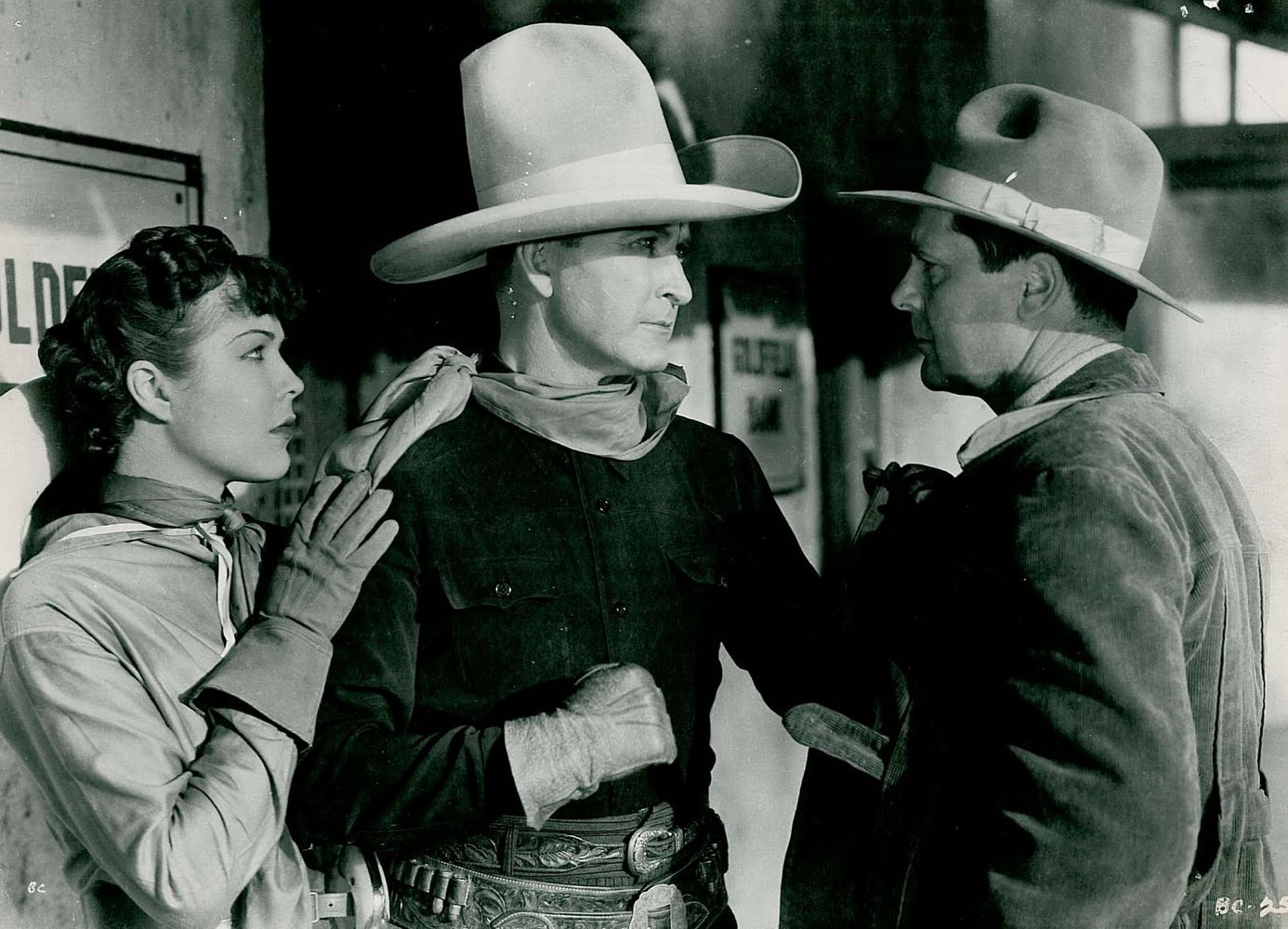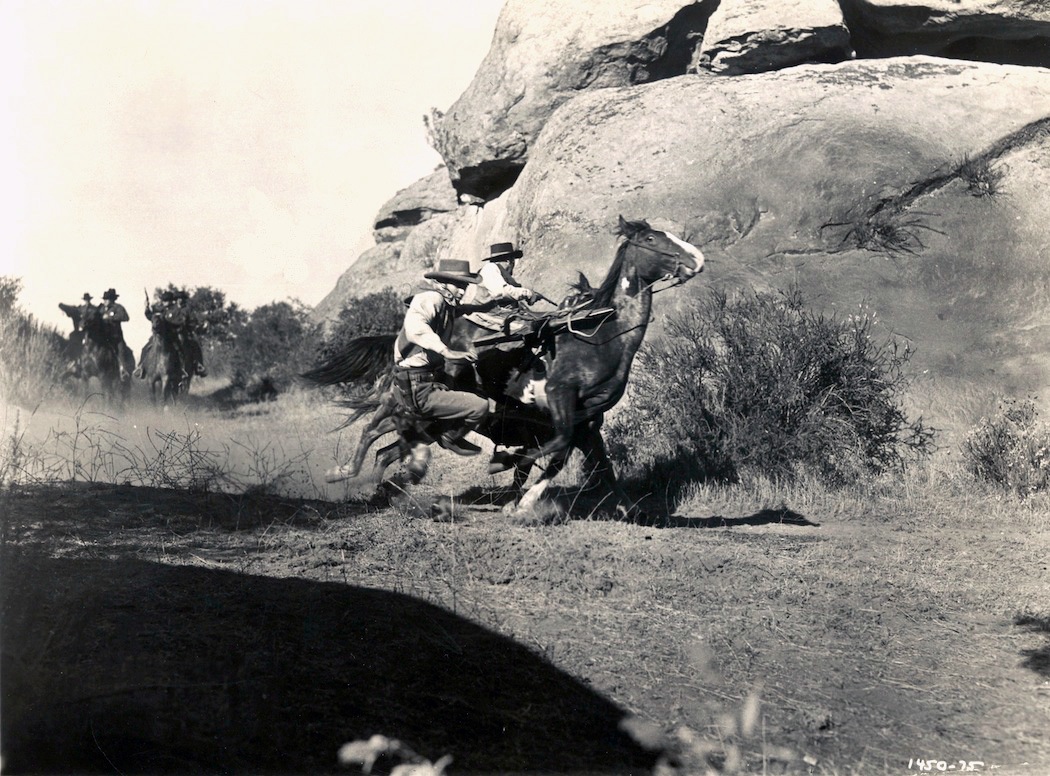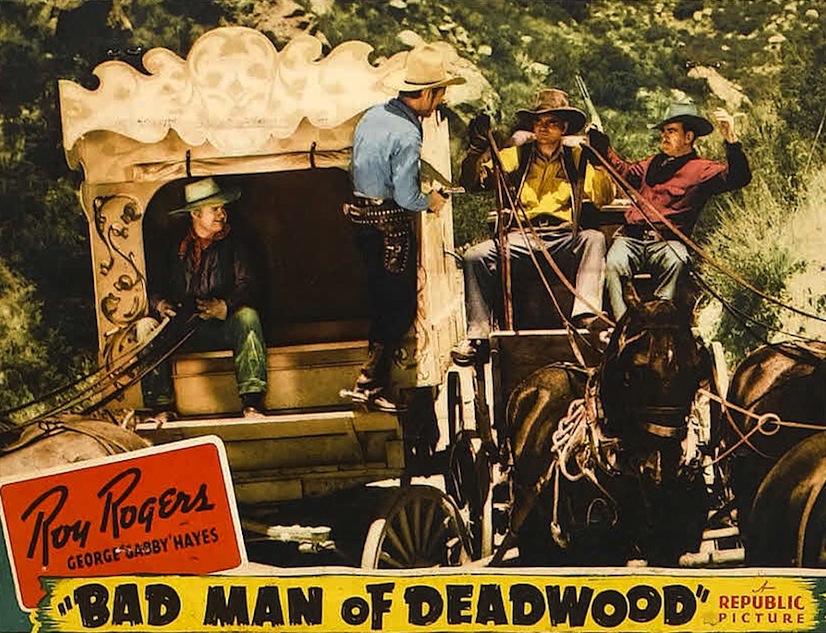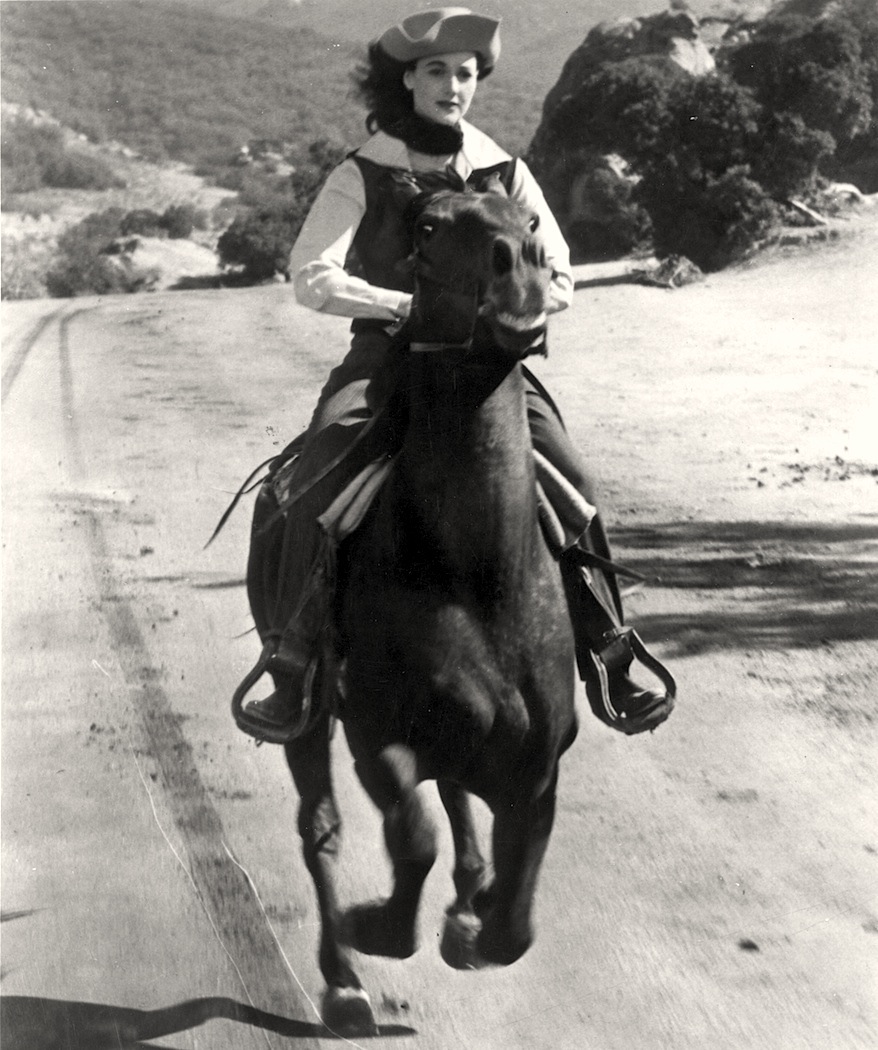In most B-Westerns you can expect to find formulaic and sometimes quite preposterous plots, stilted dialogue given a stilted delivery by mediocre actors, crude comic relief that only a child might possibly find funny, cheesy interior sets and romantic subplots involving cardboard female characters. You will often find musical interludes featuring anachronistic Western swing numbers.
You can also expect to find superior cinematography in the outdoor scenes, picturesque landscapes, superb horsemanship by any player who gets up on a horse, and beautifully choreographed equestrian action scenes. You will often find examples of expertly driven horses pulling wagons, buggies or stagecoaches, which can be thrilling.
The scenes involving horses are like the arias in an opera — they’re almost always beautiful or stirring, and as in opera they can utterly redeem a bad libretto.
If you don’t have an eye or a taste for watching men and women on horses move through beautiful landscapes, most B-Westerns won’t have much to offer you, just as most operas won’t have much to offer you if you don’t have an ear or a taste for beautiful melodies.





Plus that same bunch of backlot big rocks, often giving off day-for-night luminescence, and an innovation of the times called tyre-tracking shots (as evidenced in your last image). But yeah, those old B-Westerns were good stuff.
You get so you can recognize the filming locations in places like Calabasas, in and around Los Angeles, and the favored places that were a bit more distant, like Lone Pine, where tons of B-Westerns were shot, including most of the Hopalong Cassidy series. The running inserts of galloping horses shot from trucks are always a highlight, from both an equestrian and a cinematic perspective..
Great piece on these underappreciated films, Lloyd. Interesting how, if you watch enough of these films, you begin to notice the sublime moments in between all the formulaic bits. Their location photography is also a nice alternative to studio-bound films in other genres from the period.
Right, Matt. They also preserve an element of silent films in which character is revealed to a great degree though movement, through the way people carry themselves, especially the way they sit a horse. There’s a limit to what can be conveyed through dialogue alone, and while it was only natural to rely on dialogue excessively when sound came in, something in movies was lost in the process — something which Westerns retained longer than other forms.